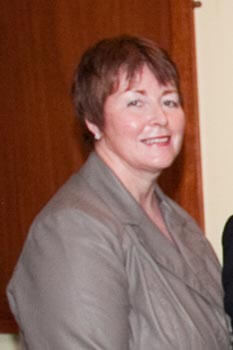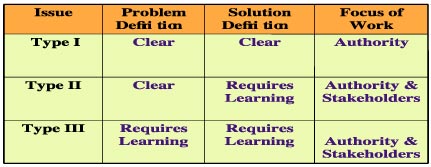Leading Harvard lecturer, Hugh O’Doherty posed questions about the difference (and connections) between authority and leadership, leaders and leading, purpose and task, linear structures and complex inter relationships, when he addressed 60 Beaumont Hospital managers, writes Anne McNeely.
“When change requires us to challenge people’s familiar reality it can be difficult, dangerous work. Exercising leadership is dangerous because you risk making yourself vulnerable whether you are supporting unpopular intentions, promoting prudent new ideas, questioning the gap between values and behaviour of your organisations, colleagues or simply asking family and friends to face up to unpleasant reality”.
These were the challenging scenarios posed recently by Hugh O’Doherty, a leading Harvard lecturer to a group of managers at Beaumont Hospital, Dublin, at an event organised by the hospital’s Learning, Development and Education Department and the Business School at Dublin City University.

Hugh O’Doherty is a faculty member at Harvard University’s Kennedy School of Government and is involved in many executive leadership programmes internationally. A native of Northern Ireland, he has consulted to many international organisations, worked in Croatia, Russia and Cyprus and has addressed the United Nations global forum on re-inventing government. His work in the US also often focuses on community and public service challenges.
He reminded Beaumont managers of the need to “get on the balcony” (out of the fray) and observe and orchestrate”. Not new advice surely but well worth reiterating in the current environment when “crisis management” seems more the order of the day.
Leadership is an activity not defined by personality, traits, power, influence or position, it works with or without formal authority
O’Doherty also posed questions about the difference (and connections) between authority and leadership, leaders and leading, purpose and task, linear structures and complex inter relationships.
He described authority as:
- Power entrusted for service
- Power and authority being both a resource and constraint (leaders must have answers and must lead others)
- Authority mostly involves giving direction, protecting (assets, interests, profits, people) and creating order, which includes defining roles, controls and norms.
He said leadership is an activity not defined by personality, traits, power, influence or position, it works with or without formal authority. Adaptive leadership is the capacity to mobilise people to address the tough (adaptive) problems, those that they would rather avoid.
In every change, there is a period of transition in which nothing is clear and no one is satisfied. Adaptive challenges generate disequilibrium and avoidance. It requires learning– distinguishing what’s expendable from what is precious and essential, which involves LOSS.
He put forward a model for diagnosing types of issues requiring adaptive leadership.

Type II and III issues, he advised, required an adaptive approach. He drew distinctions between “technical solutions” and “adaptive solutions”, particularly when he provided example after example of many of our current interventions/approaches and described them as mainly technical solutions to more deep rooted adaptive issues i.e. controlling headcount, across the board budget cuts, bed/ward closures etc. He said that the real issues/adaptive challenges could be overlooked through a combination of work avoidance and managing stress. Work avoidance strategies include:
- Making the problem “Technical”
- Blaming Authority
- Killing the Messenger
- Scapegoating
In describing the final element of adaptive leadership Doherty said that as an approach to gaining buy-in/support for change there can be no stronger message than simply remembering that people “only take responsibility for what they help create”. He was not advocating heroic leadership so stories about world leaders were absent from this presentation, they were however replaced by stories of ordinary people having an extraordinary sense of purpose.
Adaptive leadership is the capacity to mobilise people to address the tough (adaptive) problems, those that they would rather avoid
Referring to the current world economic crisis/down turn he reminded us that many of previously tried and tested responses were no longer adequate, they simply were not designed for times like these.
Successful leadership is now called to:
- “Adapt not just execute”
- Experiment more than solve new problems with the old ways
- Orient towards interdependence rather than autonomy and self sufficiency
- Orchestrate/plan conflict rather than resolve conflict
- Create “next” practice rather than rely on “best” practice
- Invent the future or have it invented for you
- Take care of self – find sanctuary/personal space
– find confidants as well as allies
While I was entertained, educated and sometimes humbled by the sheer selflessness of this approach to leadership, I do admit to feeling concerned at times as to what some 60 managers in the hospital might be thinking having heard many of the more traditional views on being a good leader undermined and contradicted. Where does the role of manager fit in? Why take on formal roles of authority if you didn’t need to? Had the level of disequilibrium been distributed too much for the purpose of learning? And it is true that not every single person present was turned on by Hugh O Doherty’s model of adaptive leadership. However the feedback and the “buzz” around the hospital immediately after were phenomenal, with staff attempting to apply these approaches to their work and change projects. A key objective of the Beaumont Hospital Learning and Development Strategy involves a desire to link learning to daily work and to impact practice and rarely was such a strong correlation evident, therefore mission well accomplished on this occasion.
Anne McNeely, Deputy CEO/Head of Organisational Development, Beaumont Hospital.

